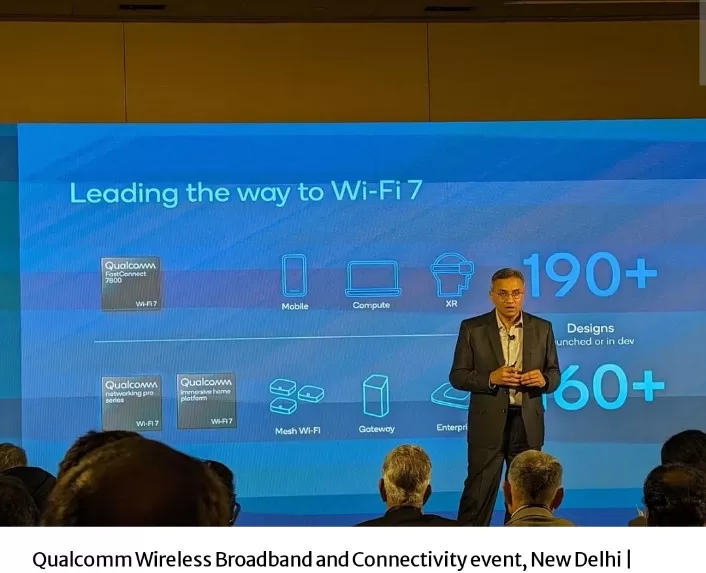New Delhi – Qualcomm, the U.S.-based technology giant, has made a significant announcement regarding the future of broadband expansion in India. The company has set an ambitious target of achieving an average speed of 10 Gbps by 2028, underscoring the central role of fiber and fixed wireless access in this endeavor.
At the Wireless Broadband and Connectivity event held in New Delhi, Qualcomm revealed that Wi-Fi 7, the latest evolution in wireless technology, is poised to make its commercial debut in just three to four months. The company anticipates that more than 350 products will be equipped with Wi-Fi 7 capabilities by the first half of 2024, marking a pivotal moment in the realm of connectivity.
One of the most exciting aspects of Wi-Fi 7 is its ability to significantly reduce latency, potentially achieving a remarkable 60% reduction compared to its predecessor, Wi-Fi 6. This technological leap promises to revolutionize the user experience, providing faster and more responsive internet connectivity.
In the context of the Indian market, Qualcomm projects an extraordinary growth opportunity in the field of 5G fixed wireless access (FWA), with an expected Compound Annual Growth Rate (CAGR) of 200% from 2023 to 2030. This underscores the growing demand for high-speed, reliable internet access across the nation.
Broadband India Forum (BIF) shared its insights during the event, forecasting that the per capita data consumption in India will reach 30GB per month by 2030. Moreover, BIF envisions that every citizen will have access to internet speeds of up to 100 Mbps within the next seven years. As the internet ecosystem continues to evolve, BIF anticipates the proliferation of 50 million Wi-Fi hotspots and a staggering 25 billion IoT devices by 2030, further transforming the digital landscape.
The prospect of Wi-Fi 7 and the rapid advancement of wireless technologies herald a promising era of connectivity in India. As the nation progresses toward becoming a digital powerhouse, these innovations are set to play a pivotal role in shaping the future of internet access and digital infrastructure.




